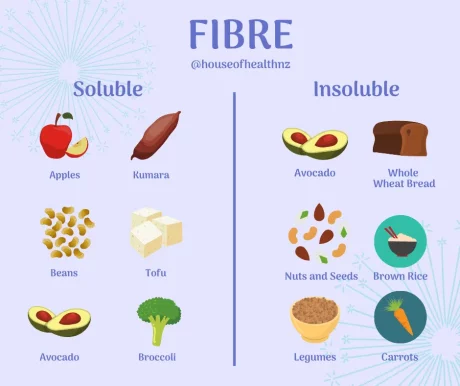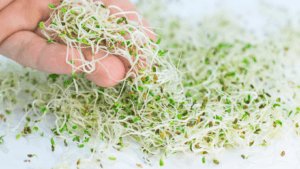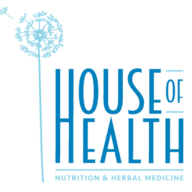
Join us on our 10 Steps to Better Digestion and support your digestive system to become stronger and more functional!
Day 1. True Hunger – What is that anyway?
Day 2. Chewing. Why should you?
Day 3. Overeating: Digestion OVERLOAD
Day 4. Fibre? What fibre?
Day 5: Does food Really cause your gut problems?
Day 6: How Often you Eat: Does it Matter?
Day 7: How Hydration Affects your Digestive System
Day 8: Breathe your way to Better Digestion
Day 9: Workout for a Digestive Tune-up
Day 10: Obeying the Call of Nature

Day 1. True Hunger – What is that anyway?
True hunger is not a rumbly tummy. True hunger is more than that and unaddressed, may make you become “hangry”. We all know that feeling when we are so hungry that we become irritable and not the best versions of ourselves!
When you were little, your mum would hear those rumbles and, being the caring mum she was, would declare that your tummy was talking, and it meant you needed food! If you’re a parent yourself, you’re probably guilty. TIP: let them tell you they need food.So, what do those tummy rumbles really mean? You’ve got two types of movement that happen in your intestines. One is called peristalsis, which is induced by eating. It starts as soon as you swallow and moves food through the digestive tract – all the way to the toilet. The second type is a bit different. It starts in the stomach, on a programmed 90-minute cycle if the stomach is empty. Long sweeping waves of contraction move through from the stomach to the end of the small intestine, finishing by depositing all the debris that have been collected along the way into the large intestine. Then it stops. It’s role is to clean the small intestine of left-over bits of food, fibre, mucous, cells, bacteria and so on. For this reason, it is often referred to as “the housekeeper wave”. The proper name is “Migratory Motor Complex”, or MMC for short.
The housekeeper wave takes about 20 minutes and if you eat while it’s happening, it gets turned off. That’s kinda like stopping the housework when you’ve swept half the floor.
True hunger can be a state of weakness, disorientation, or low energy. This is in association with the digestive system being primed, ready to get to work on the food that you will actually eat. If you are getting weak or shaky within a couple of hours of eating, this indicates a need for a check-up. It does not mean your blood sugar is low, and while in a few people this happens, it indicates something isn’t working as it should.
Eating when not truly hungry is similar to putting a cake mix in the oven, without the oven being turned on. Imagine your stomach like this, the next time you think you are hungry, but perhaps you are not truly hungry.
Focus today on examining what is going on in your body when you think you’re hungry.
Day 2. Chewing – it’s important right?
Digestion starts in the mouth. The action of chewing is a mechanical process of grinding up the food, making it small so that digestive juices can work on it more effectively.
Saliva contains enzymes that start to digest carbohydrates and starches right there in your mouth. You may have noticed that starchy foods get sweet in your mouth as you’re chewing. The longer you chew, the better it turns out.
Taking the time to chew well also has the effect of slowing down how quickly you get through the meal. And that’s a good thing. We have a hormone (called leptin) that kicks in when food signals are received in the blood stream. That’s a process that takes time, so slowing down how fast you eat not only means you’re going to get more value from your food (because you digested it better), but it gives a chance for that satiety hormone to let your brain know that there’s nutrients in the blood stream before you’ve eaten too much.
Mindful eating starts with the lifting of your hand to your mouth as well as the chewing of the food itself. Pay close attention to each flavour in your mouth and notice how the food feels and smells as you eat it. If you usually take a mouthful and then immediately begin preparing another bite to eat while you’re chewing the first bite (a version of multi-tasking!), it’s hard to be mindful of the process of chewing. Put down your utensils between mouthfuls helps you to take time.
Your focus today is on being more mindful about the way you chew your food.

Day 3: Overeating: Digestion OVERLOAD
Nobody wants to create a digestive overload! This can happen when we either eat too much at any one time, or if we eat many small meals or snacks throughout the day. Are you a serial snacker?
As we investigated in Day 1 of our 10 Day Digestive Challenge, it is important to know and feel true hunger, and then only eat when truly hungry to optimise digestion.
It’s extremely important to eat a sensible amount as this means less stress on your digestive organs. To help digest food, the stomach produces hydrochloric acid, the liver makes bile and the pancreas creates digestive enzymes – all these are required to break down the food so you can get the nutrients from it. Eating too much requires more work from these organs to produce adequate digestive juices.
Overeating also puts pressure on the valve at the top of the stomach, which increases the chance that stomach acid may back up into the oesophagus, causing reflux and heartburn.
Overall, overeating not only overtaxes the ability of your digestive system to process the food but also puts a load on the rest of your body to deal with it, which can lead to metabolic problems. Remember the importance of chewing and how it slows down how fast you eat? Don’t wait until your belly feels uncomfortably full – when your satiety hormone has had a chance to kick in, your brain will tell you that you’ve had enough.
So stop already!

Day 4: Fibre? What Fibre?
How often do you stop and think about how much fibre you have in your diet? If you simply don’t, then perhaps now is a good time to start!
There are two types of fibre and both are important.
One, commonly known as “roughage”, is also known as insoluble fibre – it cannot be digested. But it’s important as it adds bulk to the stool and works like a bit of a scouring pad as it moves through, helping keep you clean on the inside.
The other type is soluble fibre. “Soluble” because it absorbs water. This has several advantages: it can prevent the stool from being overly watery or too loose, help keep you regular, and it also helps by moderating blood sugar levels, binding cholesterol, toxins and “used up” hormones, and carries them all they way to the toilet. Awesomeness, right there!
How much fibre do you need? Most people in NZ don’t consume enough: Adults need about 25-30g per day, more (30-40g per day) if you have diabetes or to improve heart health. Work out how much fibre you’re getting in a day by checking your intake against this list. One tip for ensuring you get enough fibre is to aim for at least 5 servings of vegetables each day and up to 2 of fruit.
An important feature of fibre is that it is also providing nutrients that feed the gut microbiome, helping keep you healthy on the inside. If you find fibre is causing unpleasant symptoms, it suggests that the microbiome is out of balance – always increase your fibre slowly. If you can’t reach the recommended intake without problems, we recommend a digestive diagnostics session with one of our consultants.

Day 5: Does Food Really Cause your Gut Problems?
Do you find yourself blaming the food for your digestive complaints? Do you find that certain foods make you bloated or give you acid reflux? We’ve got some news for you: it’s probably not the food’s fault!
A digestive reaction to something you’ve eaten doesn’t necessarily mean the food is bad or should be avoided forever. Sadly, people often come to this conclusion. While most people with a food allergy know to avoid it, few realise that new reactions to a food are seldom happening because of the food. Instead, it tells a story about what is (or might be) going on in your digestive system.
Understandably, when the digestion is not working right, we want a solution. So it’s pretty common for people to follow well-intended advice and stop eating something for no other reason than because someone said “try cutting out x”, or because you read somewhere that it might be implicated. Going gluten-free or even following popular, well-researched diets (like the low FODMAP diet) should not be done without guidance. In fact, problems associated with gluten need a proper investigation before removing it from the diet. Cutting out certain foods without guidance might make you feel marginally better but this is often only temporary, and if it was a good food, can be detrimental to your overall nutrition and gut health. It can also cause people to feel even worse when the food is reintroduced (which of course tends to reinforce the ill-begotten belief that the food is the problem). If one food after another is taken out of the person’s diet, this can result in a drastic reduction in the range of food one feels “safe” eating – often until there is only four or five things eaten regularly. On top of this, it creates a fear of food and initiates some abnormal behaviours around food that might also impact you socially.
Before any sort of dietary elimination is put in place, get a professional involved.

Day 6: How Often you Eat: Does it Matter?
Do you know people who like to graze or eat small amounts often? Human digestive systems are in fact not biologically built for this way of eating (with some exceptions). Learn how to stop grazing to improve your digestive health today.
Grazing, as a rule is not meant for humans. You know the way cows and sheep consistently eat grass throughout the day? Cows and Sheep are ruminants, which means they have one stomach with different compartments in it, to help digest grass and other plants that they eat. So it doesn’t make much sense to eat like a cow or a sheep when the human digestion system is set up a completely different way.
Adult humans seldom have good reason to eat more than 2-3 times a day. Although this can change for certain types of people such as intense athletes or people with special health needs. However, what’s important is that you are truly hungry before you eat (see Day 1), and each meal should be wholesome and nutritious.
Allowing time between meals allows the stomach to empty completely, which after a proper meal with the right amount of fats and proteins, takes about 3-4 hours. In between meals a special “cleaning action” happens in the gut. Or not. If you eat too soon the cleaner may not begin, or might stop before the job is done. Also eating again before the stomach has finished emptying not only prevents partially digested food emptying the stomach, but what is left behind could start it’s own fermentation process.
Think about it this way: if you keep snacking, breakfast may still be in there at dinner time!

Day 7: How Hydration Affects your Digestive System
You have probably heard from a number of sources that the perfect number of glasses of water per day is eight for an adult. Is this in fact the optimum? And what factors can affect the amount of water you need daily?
The minimum water intake for an adult is generally flagged at about six glasses a day – or about 1.5 litres. But the actual amount you need depends on many different factors, such your level of exercise, type of activity, the climate you spend your time in and your body weight. The bigger the person is, the more surface area, and therefore the water need is higher. If you are exercising a lot or in situations that increase your fluid losses such as using a sauna or hot tub, being in a dry or overheated environment, experiencing menopausal sweats or if your bowels are a bit loose bowels, then your fluid intake may need increasing to counteract these losses.
An important job of the large intestine is to retrieve water from the digested food. If there intake is inadequate to meet needs, more may be recovered from the intestines, drying out the contents. So inadequate fluid intake may contribute to a tendency towards constipation.
Water also helps prevent the build-up of toxins in your body. Think of each glass of water as flushing the chain. Things don’t pan out so well if that doesn’t happen very often!

Day 8: Breathe Your Way to Better Digestion
You might not realise this, but breathing – and especially deep breathing – can help your digestive health. How do you breathe usually? Is it shallow, or do you breathe down into your belly?
Observe your normal breath – where does it naturally go? Does your chest inflate? Do your shoulders lift? Is it hard for you to breathe down to your belly?
If your chest is what moves with each breath, then you are one of many who has “unlearned” how to breathe.
Proper breathing uses the diaphragm. The diaphragm is a large muscle that forms a sort-of upside-down sling tht separates your lungs and your abdomen. When you breathe in this big muscle contracts and flattens, sucking air right down into the bottom of the lungs and making the belly move outwards a little. As well as inflating the deep lung tissue, this action effectively pumps your internal organs – particularly the liver, stomach and large intestine, which sit just under the diaphragm. When you “release” this, the out breath is a bit like a stretched rubber band snapping back into it’s relaxed form – it’s effortless.
This whole process is important – not just for your respiratory health and digestive function, but for your stress levels as well. Want to know more? Contact us.

Day 9: Workout for a Digestive Tune-up
How often do you exercise? Are you getting enough every week? Did you know that getting your body moving can help food make it’s way through your digestive system?
Exercise involves using abdominal muscles and your diaphragm (refer to Day 8), both of which help food to move through the digestive system normally. Moderate exercise decreases how long it takes for stool to move through your system.
Walking at least 30 minutes every day is an absolute minimum. It is important to find – and use – other ways to move, no matter what your job or lifestyle. If exercise seems to move things along too well, that’s also not abnormal, as movement helps move food contents, gas, and stool along the digestive tract!
Increasing your fibre (see Day 4) can help with this. But if symptoms persist, or fibre makes your digestion worse, we recommend an appointment to assess the problem further. Lifestyle coaching, including exercise tips, are all part of a holistic approach to health, such as provided by a consultation with one of the practitioners at House of Health.

Day 10: Obeying the Call of Nature!
As many say, “when you’ve gotta go, you’ve gotta go!’ Obeying the call of nature is very important and most people do not realise this until it’s too late in their lives and their ability to recognise or respond to the urge disappears.
Last, but definitely not least in this series of digestion-focused blogs is: If you need to poop, find a toilet and: Just do it!
As toddlers we are taught to recognise the urge to poop and control it until getting to a toilet. While occasionally its simply not, er..convenient (say in the middle of an important meeting), mostly that isn’t the case, unless of course you’ve got a problem that you need to come see us about :o).
When you override the urge to hold the poop in, the muscles of the anus tighten, instead of relaxing to let the bowel motion out. And the stool, which was sitting in the rectum, at the end of the intestine, can migrate back up a little, more of the water content may get reabsorbed, which makes the stool drier and harder to pass. This increases your risk of constipation. It also adds to the bulk in the lower intestines, putting pressure on the walls to stretch. The increased bulk may also interfere with normal blood supply to the area, which can lead to painful haemorrhoids, and can also cause damage to the nerves in the rectum. This means they do not respond normally when there is stool there again. Plus, stretched intestines are less able to contract as well as they should.
Over time, rectal hyposensitivity can develop, which means your brain and bowel stop responding to the urge, which can result in the problem developing into a chronic one. Strategies to overcome this involve attempting to poop after eating (there’s a normal reflex that kicks in after you’ve eaten – as any parent of an infant knows!), avoid constipation and taking on many of the strategies outlined in the 10 Steps above.
Unfortunately a lot of folk don’t realise the importance of that urge … until it’s gone forever.











